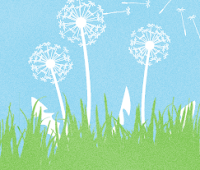
That's me - I started out as a kitten, an inexperienced innocent in the field of assistive technology and now I feel like a lion: Hear me roar - I've already been to my principal to tell her that I NEED 5 iPads for next year for my students. I actually have the confidence to actually use them. I might even buy a phone with some G's - stop getting kidding yourself - I still like my one way phone and probably will not be turning that in, any time in the near future.
I signed up for this course because it fit my schedule. I didn't really have an interest in assistive technology and face it as an academic high school English teacher, my contacts with special needs students have been limited. I have had a few high functioning autistic students - social stories and a routine seemed to work with them. I have had a number of students with LD, but by the time they get to high school they know what technology works for them and are very capable of ensuring that they can access the technology.
So there I was, week 1 and Barbara was flying through the night throwing words that I didn't understand and expecting me to know stuff that I had never heard about. And then the icing on the cake - the news that we had to create our own Blogs. Being the determined (not stubborn) person that I am, I refused to quit, even though I considered that option. I listened, I experimented and I found success. In the process of completing the course, I increased my comfort and skill levels around the use of computers within an educational setting and I learned a tremendous amount of knowledge about a variety of special needs and the technology that is there to support these students. I was amazed by the applications available to support students in reading and writing. I can't wait to get my hands on an iPad and to share it with my students. I look forward to the inclusion of the interactive textbooks within the classroom experience.
All in all this was one of the most practical courses that I have completed for my Masters. I may even put my name forward for the school planning team - a committee that I have gone out of my way to avoid in the past as I felt that I had little to offer the students and my peers. I am a lion: Hear me roar and keyboard and Inspire and iMovie and...








